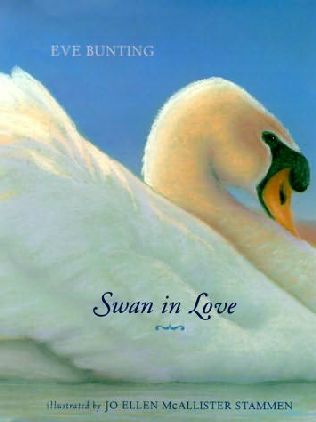 Like so many others, this book is started on the title and dedication pages. It sets up the tone of the book by first showing a small town at night, or at least before dawn and then it shows a sash, a flute and a hat. It makes you wonder what these things have in common. The story is about Jamie, a young Irish boy who is told that he is too young march in the St. Patrick's Day parade. So in an effort to prove them wrong, Jamie wakes up early and with his dog Nell, he walks the entire parade route. All the way, he is wearing his brother's sash, his father's hat and his mother's raincoat and playing a flute. Whenever something negative is said to him, his motto is "what do they know?"This is another one of those stories where another situation could be put in place of the one in the story. I mean, you could replace walking in the parade for making the dance team. Say a little girl is told she could never do it, but she tries out anyway and proves everyone wrong. When told the right way I feel like this story could be relatable to any child. Who among us has never been told that we couldn't do something, and like Jamie set out to prove yourself? It also sends a message to young children that they can do anything that they set their minds to. It's really an inspirational story.
Like so many others, this book is started on the title and dedication pages. It sets up the tone of the book by first showing a small town at night, or at least before dawn and then it shows a sash, a flute and a hat. It makes you wonder what these things have in common. The story is about Jamie, a young Irish boy who is told that he is too young march in the St. Patrick's Day parade. So in an effort to prove them wrong, Jamie wakes up early and with his dog Nell, he walks the entire parade route. All the way, he is wearing his brother's sash, his father's hat and his mother's raincoat and playing a flute. Whenever something negative is said to him, his motto is "what do they know?"This is another one of those stories where another situation could be put in place of the one in the story. I mean, you could replace walking in the parade for making the dance team. Say a little girl is told she could never do it, but she tries out anyway and proves everyone wrong. When told the right way I feel like this story could be relatable to any child. Who among us has never been told that we couldn't do something, and like Jamie set out to prove yourself? It also sends a message to young children that they can do anything that they set their minds to. It's really an inspirational story.I like how the illustrations are kept simple in this story. They are pen and ink and they look almost like etchings. There are only two colors used throughout in various tones are green and yellow, naturally for St. Patrick's Day. The age here is 5-8 and I saw absolutely. This would be a good book to have in the classroom, either to tie in with St. Patty's Day or just for the inspirational message.






